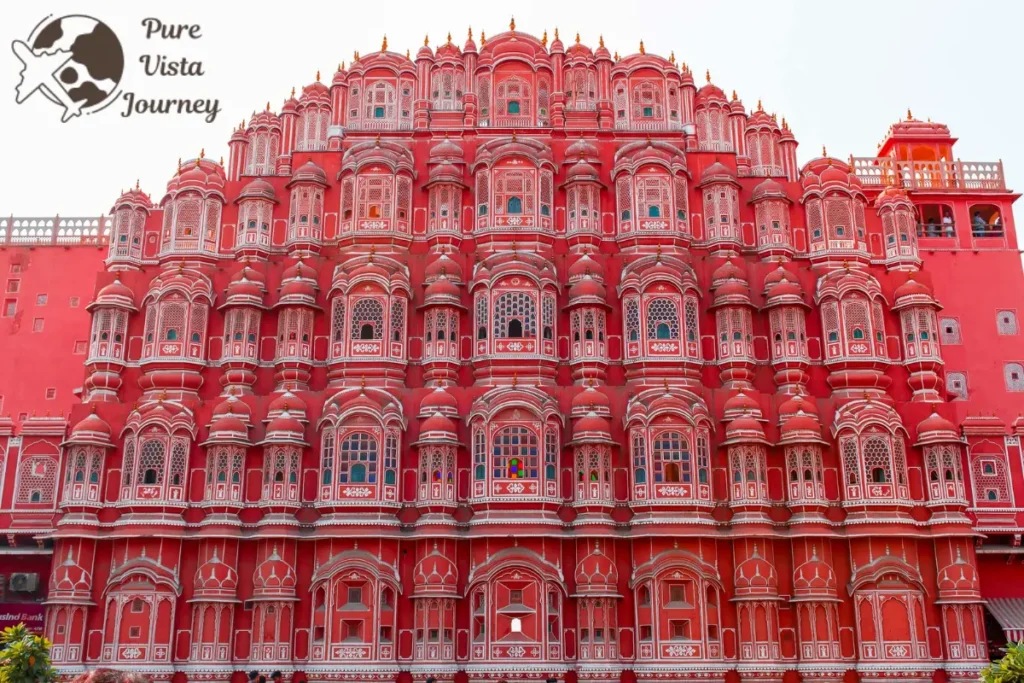Located in the heart of Jaipur, Rajasthan, Hawa Mahal is a stunning example of Rajput architecture and a major landmark in India. Also known as the “Palace of Winds,” this architectural wonder was built in 1799 by Maharaja Sawai Pratap Singh.
A Unique Architectural Marvel
Designed for Royalty
The palace was designed by Lal Chand Ustad in the shape of Lord Krishna’s crown. With its five stories and 953 intricately carved jharokhas (windows), It’s allowed royal women to observe street life and festivities without being seen, in accordance with the purdah system.
Natural Air Conditioning
One of the most fascinating aspects of Hawa Mahal is its ventilation system. The placement of the windows ensures a continuous flow of cool air, even during the intense Rajasthani summers—earning it the nickname “Palace of Winds.”
Cultural and Historical Significance
Hawa Mahal stands as a proud symbol of Jaipur’s cultural richness. Its red and pink sandstone façade reflects the city’s identity as the Pink City, and its blend of Hindu Rajput and Islamic Mughal architecture makes it a historical treasure.

Visitor Information
Location: Badi Chaupad, Jaipur, Rajasthan
Timings: 9:00 AM to 4:30 PM (daily)
Entry Fee: ₹50 for Indian citizens, ₹200 for foreign tourists
Best Time to Visit: October to March
Visitors can explore the palace’s narrow corridors, enjoy panoramic views of Jaipur from the top, and experience the nearby vibrant markets filled with traditional crafts and street food.
Frequently Asked Questions
Q1: Why is Hawa Mahal famous?
A: It’s known for its unique design with 953 windows and its historical role in allowing royal women to observe public life discreetly.
Q2: Is Hawa Mahal open to the public?
A: Yes, visitors can explore the inside of the palace and climb to the top floors.
Q3: What makes Hawa Mahal architecturally special?
A: Its pyramid shape, lattice windows, and natural cooling system make it an architectural marvel.
Q4: Can you visit Hawa Mahal at night?
A: No, the palace is open only during daytime hours.







